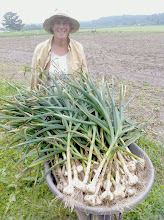
Water freezes. Of course, this is obvious, but to someone raised in California, it still comes as somewhat of a surprise. Making sure that animals have water in the winter is an ongoing challenge. In the summer, I use lots of water from the barn to water and wash vegetables as well as water the animals. In winter, the amount is cut back to around 30 gallons a day.
In the barn, water comes from a sand point. This is a 1 1/2 inch pipe driven up to 25 feet into the ground with a sieve on the end. When the pipe reaches a shallow aqua fer, the water is pumped up. In summer, a jet pump attached to a pressure tank does a great job. In winter, this above ground system has to be insulated and kept warm. I have done that with insulation and light bulbs. Slowly the ground freezes outside the insulated box and creeps under the edge. Often the pump comes close to freezing or actually cracks.
This year I have a hand pump that lifts the water from the ground. When the pumping is finished, the water drops back below the frost line. While the pump above ground freezes, it has no water in it, and a quart of warm water poured in loosens the leather seal and primes the pump. Pumping water by hand is hard work for your arms and back. I have set up this pump using pulleys, rope, a bungee cord and two boards to be powered with feet and legs. Instead of working out in the house, I pump water in the barn. This new pump not only lifts water to the level of the handle, a common feature of many hand pumps, but it can push it up hill further. There is a hose on the pump that goes up into the hay mow and then goes outside to the stock tank. This allows the hose to drain when I am done pumping and it doesn't freeze. I can fill a medium stock tank in about 20 minutes on stepping.


No comments:
Post a Comment